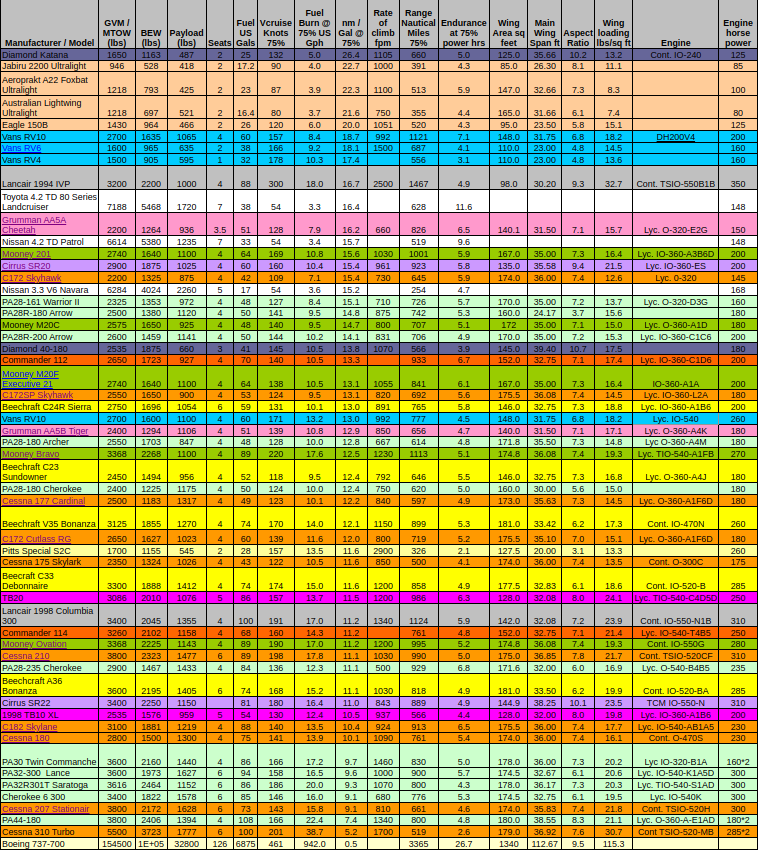What to look out for when buying an aircraft

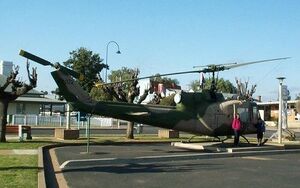
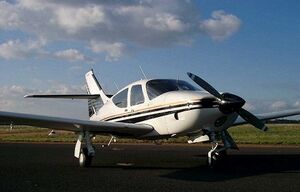

There are several important qualities we should consider when purchasing an aircraft and I have "discovered" some of these by asking questions from those
who have done this before, and I am gathering personal experience
Log book audit
A log book audit should be performed before you become too keen to purchase any aircraft. I like to look through the logbook myself to satisfy that things are OK, look for gaps in records, damage history, frequency of maintenance, even look at the hours versus dates, and check to see if the logbook is updated well. It is amazingly easy to spot an untidy maintenance history.
From my so far limited experience of looking at a few aircraft you should find:
I read in one engine logbook that the engine had been removed from a twin aircraft (registration was provided) because it was overheating and there was no entry following that statement saying what had been done to diagnose or rectify the problem. The next entry stated that it was put into the aircraft I was considering buying, and although I flew in that aircraft for over an hour, it left doubt in my mind as to the integrity of the engine. Such things are best declared up front so there are no surprises for the prospective purchaser.
I also looked at a fixed gear aircraft and discovered that it had repeated undercarriage damage and many years of consequential repairs of seals, replacement of struts etc, it was like an on going saga, and in the end the area near the baggage door had been re-enforced with a heavy stainless plate. The Basic Empty Weight had been increased, presumably as a result of repairs, (as I recall) some 55 kg above that for type, and I found the new weight and balance endorsements in the POH, so you must check out the POH too.
In another instance a perfectly good looking aircraft, with plenty of hours on the engine and flies perfectly true and smoothly, was found to have some accident history. I got very serious about this aircraft so I finally asked the uncomfortable question "was there any damage history"? It turns out that the aircraft had suffered some damage when the airframe was fairly new. The appropriate logbook section was copied and sent to me so I can see how it was repaired. The logbook stated repairs performed due to heavy landing after "engine failure" on takeoff as follows: Left hand Skins 1 and 2 replaced behind the firewall, forward wing attachment frame replaced, engine mount replaced, right hand lower rear fuselage skin replaced, aft fuselage bulhead replaced, left hand rear wing attachment replaced, forward lower belly skin replaced, upper engine mount attachments replaced. Wing lower rear skin replaced, anterior board rib replaced, fibre glass tip tank repaired, main undercarriage leg replaced, wheel fairing replaced, rear spar attachment replaced, under carriage and wing attachments crack test satisfied. This was on the first page. These repairs were performed more than 27 years ago and covered by insurance on a young aircraft and nothing would have been spared. If these repairs had not been performed properly the wing would have fallen off or the engine would have fallen out, but it wasn't until I showed the logbook extract to a LAME that my mind put at rest. I liked this aircraft and as a result of the assurances from several LAMEs I very nearly bought it. The aircraft is, in my opinion, in good nick but now I have set my goals a little higher and would prefer a retractable undercarriage and a bit more speed and less drag i.e. more efficiency.
I also looked at an aircraft, admitedly at a cheap price, with large ETR and PTR, it was of a particular type where there was a pilot's association so I contacted one of the members and one of his mates on the same airfield went out and looked at it. The local knew that the plane had not flown for at least 5 years. Vendors don't normally lie, and some vendors are very upfront, but other vendors will not volunteer information unless you ask, so do not feel you can't ask - just do it. You should find out why an aircraft is valued below the market price of other aircraft of the same type.
Another sales broker has been very open with me in regards to a hail-damaged aircraft, and well after all a few dints in the wing, fuselage and stabilator won't stop it flying will they? You could even have some peace of mind and leave it parked on the grass in Canberra and never need worry about those occasional hail storms that pass through. Kind of like driving your 4WD off road once you have already scratched it on the black-berry bushes - it doesn't matter any more does it? You probably would want to repair it though or at least in the future and give it a new paint job, and you would probably try and move it to a hangar - wouldn't you? Well I would be happy to fly it, but when you want to upgrade or sell it, you will find the next person may not be so understanding. I asked the agent how much would it cost to repair because he told me he bought the sister plane which was also damaged by the same hailstorm. The agent got his aircraft repaired and repainted for $17,000 not including GST. I liked this agent, he was honest and most helpful. With this information I just determined that this aircraft was still too close in price to some others of the same type after I did my sums. I periodically check in on this aircraft and just found out it was sold somewhere between Friday 6 August and the 8th. The price wasn't quite attractive enough. It also has fixed gear and is not as efficient as I hoped. I am now looking for an aircraft with retractable undercarriage.
Caveat Emptor
Another aircraft I was persuing, also via a sales broker, turned out to have a price too good to be true. So I asked the questions when was the engine zero timed, when was the last yearly maintenance, and I received the response the engine was "done" in 1998. However, when I then asked was the engine zero-timed when it was "done" I never received a response to that email. I asked other questions too, which were also equally ignored, and I have sent two emails since. "Caveat emptor" - buyer beware, if it seems to good to be true, and you consider persuing it, then you are suffering from wishful thinking. It is like a stock trader who only sees the upward parts of a trend when the market is in fact going down, just because he bought long and he is expecting the shares to go up. Don't let your emotions carry you away in deference to reason.
How to proceed
Once you are satisfied that there is merit in proceeding you should organise to have a proper logbook audit performed. An audit by a professional, rather than yours truly, will determine the hours left on components and most importantly you want an indication of which bits need replacing and at what cost. Sometimes the owner will bring or send the logbooks to you, othertimes they will send photocopies, which in the first instance is OK for you to peruse, but if you are serious you need to then arrange for the originals to be sent to a LAME. After looking at so many aircraft, when I ask can I see the logbooks or have them sent to my LAME and the answer is no, I just give that one a miss. Surprisingly many owners make this step difficult.[note 1] Being this decisive helps narrow down the field, but as I have found I am now looking at more expensive aircraft.
Pre-sales Inspection
I very nearly bought a lemon; I placed a deposit on an aircraft (TB10) via the sales broker's escrow account and had the foresight to make the sale conditional on a satisfactory logbook audit and pre-sales inspection, and a test flight. I then commissioned a local LAME, who had not worked on the aircraft, to perform the logbook audit and the pre-sale s report and I gave him very specific instructions to perform some AD checks for the type and a corrosion report. This was all done remotely because it would have cost me several thousand dollars of my time and expenses to go up and physically see this plane. I basically worked off photos and the reports. Just as well I did this because both wing spars, which are machined from a solid peice of metal, were found to be exfoliating. This means the aluminium alloy's skin was flaking and peeling, and as a direct consequence the aircraft was grounded on the spot. I have reports that both the vendor and owner were suprised, It seems that the original maintenance organisation was not vigilant enough to remove the wing inspection covers and double-check on corrosion, despite this aircraft being located near the coast. You can even remove the wing tips and easily peer into these wings and it isn't too difficult to see the wing roots. It is incredible that it had recently been through a 100 hourly signoff. A current maintenance release does not prove that the aircraft is sound and you should be wary of any aircraft kept or maintained near the coast.
This little exercise saved my life and the life of my family and friends. My son and I and an instructor were going to RPT up there and fly this aircraft back, and I was going to get my CSU endorsement one the way home. In the end it only cost me a part of this time and $625 to get it checked out. The report saved me at least $25,000 dollars for a second-hand set of main wings and the news taken in that light was initially a great relief and only afterwards did the disappointment set in. I want to firstly buy a safe aircraft and secondly know what needs to be spent, and lastly I want the option not to proceed if the aircraft is inadequate. A good pre-sales inspection report is a very sound investment, and you should try and find where the aircraft has spent its life to determine how much effort and money should be spent checking it out. You ought to make your purchase conditional on the aircraft passing these preliminaries.
Registration
Once you obtain the registration marks of the aircraft you can attempt to perform a websearch for any history. It is suprising but I have found previous registrations and some history through web searches, but there is no guarantee as this data is not officially provided. You can also try searching the CASA aircraft database but currently there is no mandatory online registry where interested parties are listed (like REVS) so you need to consider other means to determine if the aircraft is un-encumbered. Sometimes the interested parties are listed in the CASA database. If you purchase through a reputable sales agent they will often provide you with a statuary declaration from the vendor stating that the property is un-encumbered. Likewise the vendor usually organises that outstanding finance is paid-out and the remaining money, after fees, is usuall passed on to the former owner. You should ask for this assurance from any vendor because CASA does not guarantee that the listed interested parties are in their register.
Performance
I have started using performance as an aid to compare different aircraft types, because deciding on one model against another, as well as accounting for engine time remaining and total airframe hours, is quite difficult. I have placed some of this analysis in a spreadsheet which is included here for convenience, the rest comes down to personal preferences and experience. I have also performed lift and drag calculations for these various aircraft types to see how that relates to the fuel consumption rates, but you can use the Nautical miles per (US) Gallon rate in the absence of the drag coefficient. Suprisingly some aircraft have better consumption figures than my 4 wheel drive!
The comparison spread sheet [1]
(Out of interest I have also added some 4WD vehicles and a Boeing 737 to this spreadsheet.)
Things to look at for various types of Aircraft before purchase.
<img src="takeoff235.jpg"/>
PA28-235 Takeoff chart
Specific types
This section is an attempt to raise your awareness of details of different aircraft types. The section will be completed when I have some time.
Beechraft
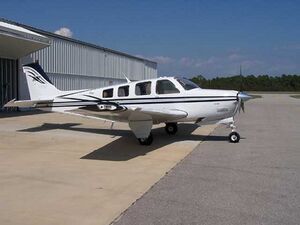 |
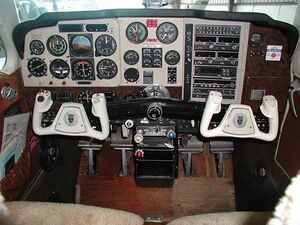 |
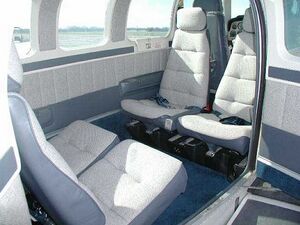 |
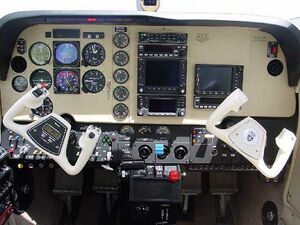 |
The Bonanza A36 is a popular fast model, but take note of the fuel burn rates, you must weigh up operational cost versus carrying capacity of 6 and the larger engines have a Time Before Overhaul (TBO) or 1700 hours. See Aircraft performance comparison
To be completed.
Cessna
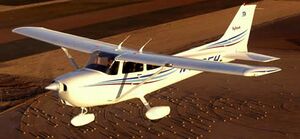 |
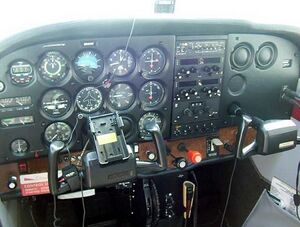 |
Probably the most popular GA aircraft and you might ask why? Well the lighter versions are reasonably priced, and believe it or not, relatively efficient. They all fly consistently, have a reasonably low Vs making them harder to stall (well you really have to yank the nose up or use a large load factor in normal flight to stall them), and they are very good at short field landings and take-offs. All due to the wing loading and the pendulosity caused by the high wing. After all birds have their wings attached on top. However, you must use good cross-wind technique to land them due to the high wing and the large moments that can be experienced once a wing lifts.
Australian farmers love them because the high-wing sheilds you from the sun when you fly. You can taxii them through the farm gate, and park them in the tractor shed, and as an added bonus you can pitch a tent under the wing after you land at your favourite outback destinations, such as the Birdsville races.
I personally find the mushing characteristics at the approach speed a little annoying but you get used to it. I had a recent conversation with a 737 pilot and he mentioned that the 737's are just the same as a C172 to land due to the same characteristics, so Cessna is not alone.
You probably can't go wrong purchasing these as a first aircraft because there are so many, lots of spare parts, and nearly any LAME can rebuild most sections. The main wings can be completely dissassembled and rebuilt with relative ease and won't cost as much to repair as other aircraft.
Cirrus Design
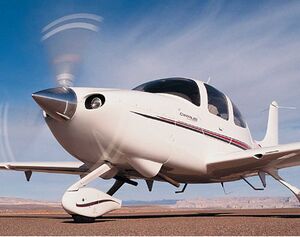 |
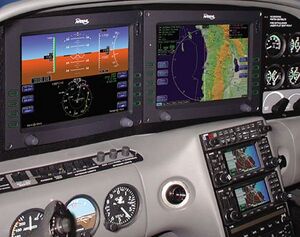 |
What can we say about these aircraft, the generation 2 aircraft are state of the art composite aeroplanes. The SR20 has extremely low drag for a fixed gear aircraft. The cockpit is all glass and the aeroplane is flown by a joystick on the side. A dream aircraft.
- COPA]
Grumman
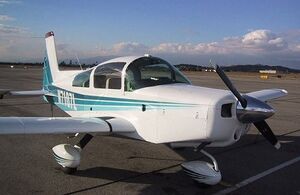 |
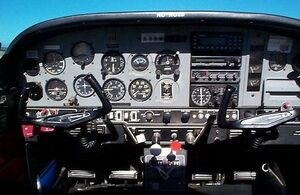 |
 |
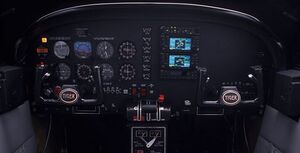 |
Though fondly referred to by most owners as "Grummans," these aircraft were originally manufactured by American Aviation and later by Grumman and Gulfstream before going out of production during the 1980s. American General produced Tigers in the early 1990s, and in 2001 Aircraft</a> once again began building Tigers.
There is a strong following of Grummans as evidenced by the
<a href="http://grumman.net/aya/">American Yankee association</a>
(the Yankee was the first model produced).
To be completed.
Mooney
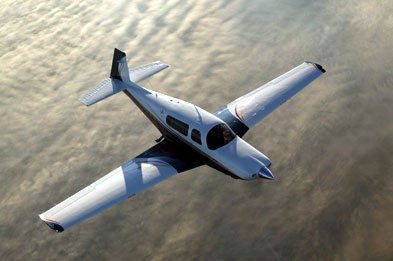 |
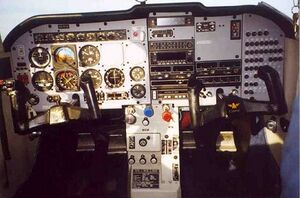 |
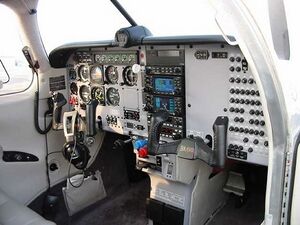 |
The M201 has very low drag as is evidenced by looking at the fuel consumption in the <a href="AircraftComparison.htm">comparison</a> spreadsheet. You can visit <a href="http://www.rvproject.com/m20j/why_mooney.html">"Why I own a Mooney"</a> for some history and a comparison with other popular aircraft.
The Mooney has a very distinctive shape that looks small and low to the ground but don't let that fool you, it is a very robust aeroplane and "bigger" than it looks. The main wings are rated to 9.8 G, it employs rubber cone rather than hydraulic suspension, and there are photos with people sitting right along every spare surface of both main wings - you wouldn't be able to do that to any other low-wing aircraft!
Mooney aircraft have an annual AD that is mandatory. The interior of this aircraft is required to be striped so the monococque hull tubing can be inspected for corrosion, this adds time to the annual inspection, but the hull represents added safety for the pilot in some emergencies.
The Mooney is a very slick aircraft and consequently you can enrol in a special pilot's profficiency program to reduce your insurance costs. I would imagine there may be a tendency to land too hot and suffer subsequent bounce and ballooning - it must be harder to slow down to the approach speeds from 150 Kts plus.
See Aircraft Population in Australia for Mooney
population in the Australian register</a>.
- AMPA- The Australian Mooney Pilots Association.
Piper
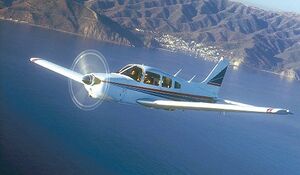 |
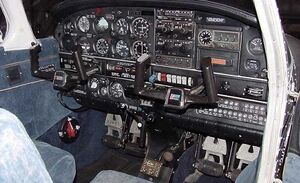 |
Piper seems to offer a variety of models, however there are about 1796 Piper models and 2620 Cessna models on the Australian register. The PA28 model line from Piper is the most popular lineup.
Socata
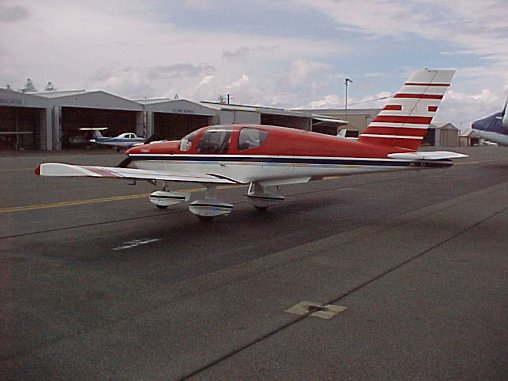 |
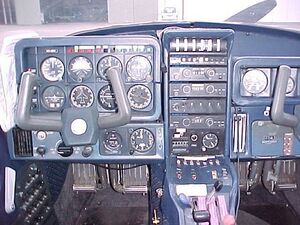 |
Tobago's are beautiful aircraft in terms of cockpit layout - very ergonomic and modern looking, erverything is in easy reach with the
central radio-stack and engine controls in the central console.A large number of Tobagos where brought into Australia to be used as training aircraft. Numbers of these have been parked outside and I have run into more than 3 aircraft that have been damaged in hail, and certainly many aricraft have suffered from the effects of sun, inside and outside.
Tobago (TB10 and TB20) have a wing-spar machined from a one piece alloy, which I believe may be an aluminium-lithium alloy. Even though the spar is anti-corrosion treated at the factory, this type of alloy is quite susceptible to corrosion (that is why they treat them at the factory). If you consider buying a TB10 or TB20 you should have the spar inspected for corrosion. I believe these aircraft, and for that matter any aircraft located near the sea, should have a regular anti-corrosion program applied.
There is also a tendency for the gull-wing doors to leak and an aircraft cover is an essential item. Water can collect under carpets and affect the floor-pan and when it evaporates it can affect avionics. This is exacerbated due to the glass-cockpit and is why a cover is essential.
There is a perpetual AD that must be applied to the wing attachments every 2000
hours. There is also an undercarriage AD/TB10/1 option 9 which costs circa $20,000
which is often not done (well it is an option). Option 9 helps strengthen
the wing and ribs that tend to crack and would be essential for aircraft involved
in training.
There are 35 ADs on the aircraft, one of which is that the pilot's seat can become detatched from the floor, and you should check that this AD has been applied. The seat attachment doesn't look as strong as the one in my 4WD, it seems to be made from welded wire. I know it is an areoplane and the manufacturer wanted to keep the weight down - perhaps there are no big French pilots. Other ADs affect the control surfaces, so I recommend a comprehensive pre-sales inspection of these aircraft.
I have an old copy of the 35 <a href="TB10ADS.zip">TB10 ADs</a> that you can peruse, however they have probably been updated since I obtained them, and they don't seem to have the options listed. The manufacture also sends out service bulletins and advisaries that unless you subscribe to the service you won't know. You should always defer these matters to a LAME.
Performance
Because there are many different types of aircraft, and many factors that govern the price of an aircraft, I have decided to compare aircraft based on their performance. The primary performance factor I chose was fuel efficiency, basically how far the aeroplane will travel on a given amount of fuel. Of course I also look at how many seats, the cruise speed, other features such as landing gear, hours and price.
What do I do now?
I have looked at several aircraft and I believe these experiences have put me in good stead. I am beginning to understand a lot of the jargon, I now know which questions are the most important to ask, and I am aware of some of the things to look out for. It is not the same as buying a used car where you have your mates go around to offer you moral support, these things fly in the air, if they crash the human body often doesn't survive.
Aircraft Populations in Australian Register
Performance
Markets
- Aviation Trader - the largest Australian aircraft trading post
- RGMAviation - an aircraft broker for local Australian sales, they also export used planes to the USA.
- Brian Jones Aircraft Sales Centre
- Ian Baille Aircraft Sales
- AeroTrader Online - U.S.A.
- Aircraft Shopper Online - U.S.A.
- Controller - U.S.A.
Some sales agencies do not have a website but there are a lot of vendors, you can find some of these in the <a href="http://www.aviationtrader.com.au">Aviation Trader</a>.
Interest Groups and Other links
- Cessna Pilots Association
- Cherokee Pilot's Association
- COPA -Cirrus Owners and Pilots Association
- The Australian Bonanza Society
- AMPA - The Australian Mooney Pilots Association</a>
- Socata - Users group
- Plane and Pilot Aircraft Specs
Disclaimer
This article contains my opinions and the information and data presented has been acquired from various sources. Some data are calculated, always consult the real POH for performance figures, and consult with experts regarding my opinions - I am not a LAME.
Neither the author, nor associates guarantee this information, and the reader is warned that they use this information at their own risk.Footnote
Well I have done it, I have bought a plane[note 2]. It is an interesting choice as it was not on my original hit list, but it is a low-wing aircraft, with a CSU propeller, fuel injected IO360 (200 hp), retractable undercarriage, with simple rubber disk gear suspension and trailing-arm links that make for wonderful landings, provided you do not drop it on. It has three full-sized doors and long legs with steps on both sides because the wing is fairly high off the ground. There is quite a bit of room inside and hence it is a little slower than an Piper Arrow but makes up for it in passenger comfort.
I will keep you in suspense no longer - I am the proud owner of a fat mouse, a Beechcraft Sierra C24R, a golden-oldie, well actually mine is orange and made in 1977.
It will cruise at 131 Kts when you get onto the sweet spot, it flies nose down like the Beechcraft Duchess, and has one less engine to manage and is less hungry on the fuel. Current estimates on fuel burn is between 38 L / hr and 42 L / hr for TAS between 120 and 131 Kts. Oh and it is ever so roomy inside, 4 seats + 2 kiddies seat positions in the rear.
It has the fat NACA wing section which makes for an extremely extended stall starting near 60 Kts, you feel the onset of buffeting and hear it before the stall occurs and this wing actually performs very well in rough air.
The initial approach speed is 81 Kts and final approach is a low 70Kts, by low I mean less than 1.3 x the stall at 60Kts. Best Glide is 91 Kts, just like the Duchess, and by the way, it has the same fuselage section as a Duchess, the only differences are the engine and nose section and the main wings are fat and have a lot of dihedral and it doesn't have a t-tail. It has a stabilator which is flat, thin and symmetrical. Because of the aircraft wing-loading and design it takes-off with 15 degrees of flap according to the POH, although other owners tell me 10 degrees is better. It actually lifts off near the stall and I have developed the nack of pushing the nose down parallel with the gound, building up to a minimum of 71 Kts (Vx) or 84 (Vy) or 96 Kts (Cruise climb) before climbing out and retracting the gear when there is no runway left to land on.
It will take off without flaps, did I say that? You must definitely build up to takeoff safety speed in ground effect without flaps, but it only takes a few seconds, and then it climbs out like a homesick angel at 900 fpm with an OAT of 32 degrees Celsius, but you must fly it at 96Kts to do this!
The flaps are really more like drag devices than lift devices and really get in the way when you want to climb out, you dump them as soon as you can provided you are above Vy, and if you offset by increasing speed you notice hardly any loss of lift. It is best to climb with speed while you can, and as the air density drops off you gradually need to climb at higher angles of attack, eventually you may need to climb at Vx at the critical altitude which of course depends on the air density and your weight.
I bought the plane from the salesman Ron Jackson[note 3] at Riddells Ck, who was a pilot and AME, and it was inspected by Doug Robinson from the Aviation Centre Tyabb, I can highly recommend both people. In the first month of ownership I flew over 25 hours block time and put 1009 litres of fuel in VH-UMS and performed one oil change. Next month I hope to have a remote oil-filter which will extend the oil changes to 50 hours.
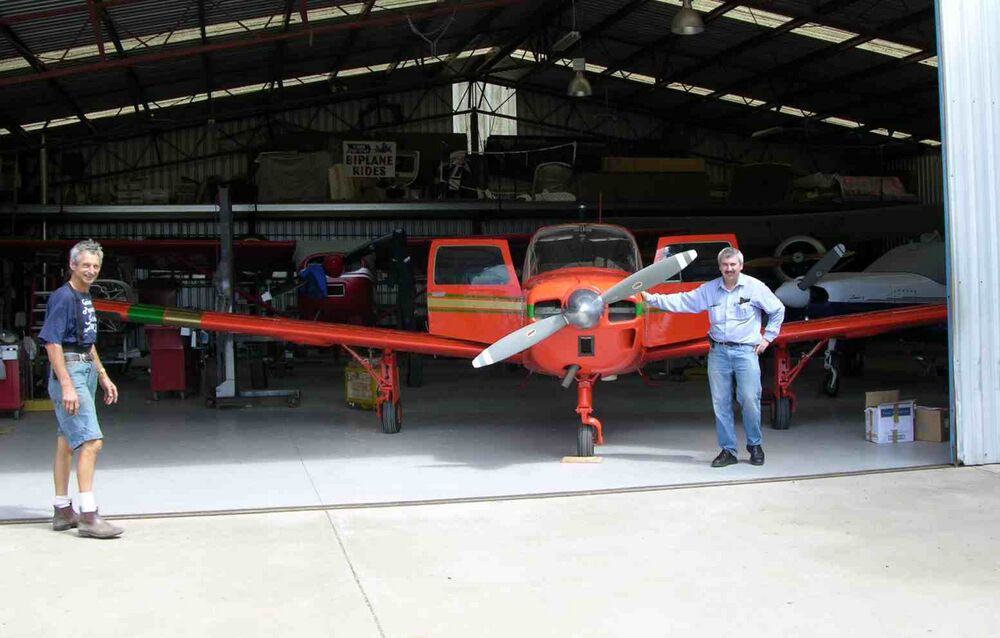
Post press: Honest Ron actually brought the remote Oil Filter back from Oshkosh later that year in his suit-case.
I now fly a Mooney Aircraft M20J 205 after having owned an M20J 201.
First published (C) Copyright, Ralph Holland, 2006.
notes
- ↑ Now I am an aircraft owner I wouldn't send my logbooks either - but rather copies. Copies are OK provided there is proof they are a continuous record.
- ↑ Since publication I moved onto my second Mooney Aircraft an M20J 205 - fully coupled Glass with Vertical Speed and Altitude Capture and GTN750/GTN650 which can fly IFR holds, the GS on ILS and VNAV, LVP - and with PBN.
- ↑ Ron Jackson - crackers - is deceased.
- ↑ Performance spread-sheet comparison spread sheet

